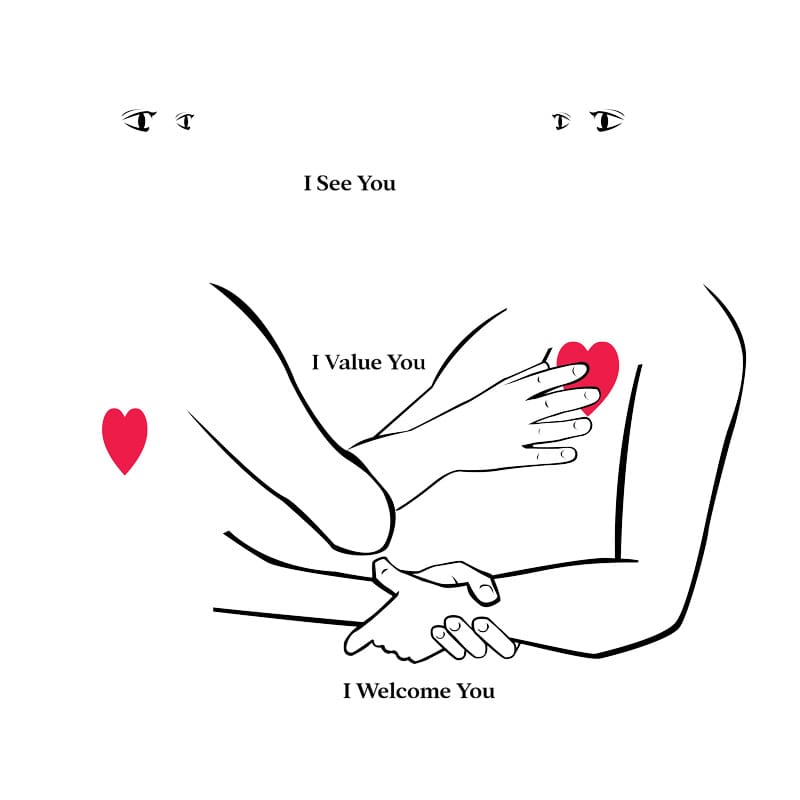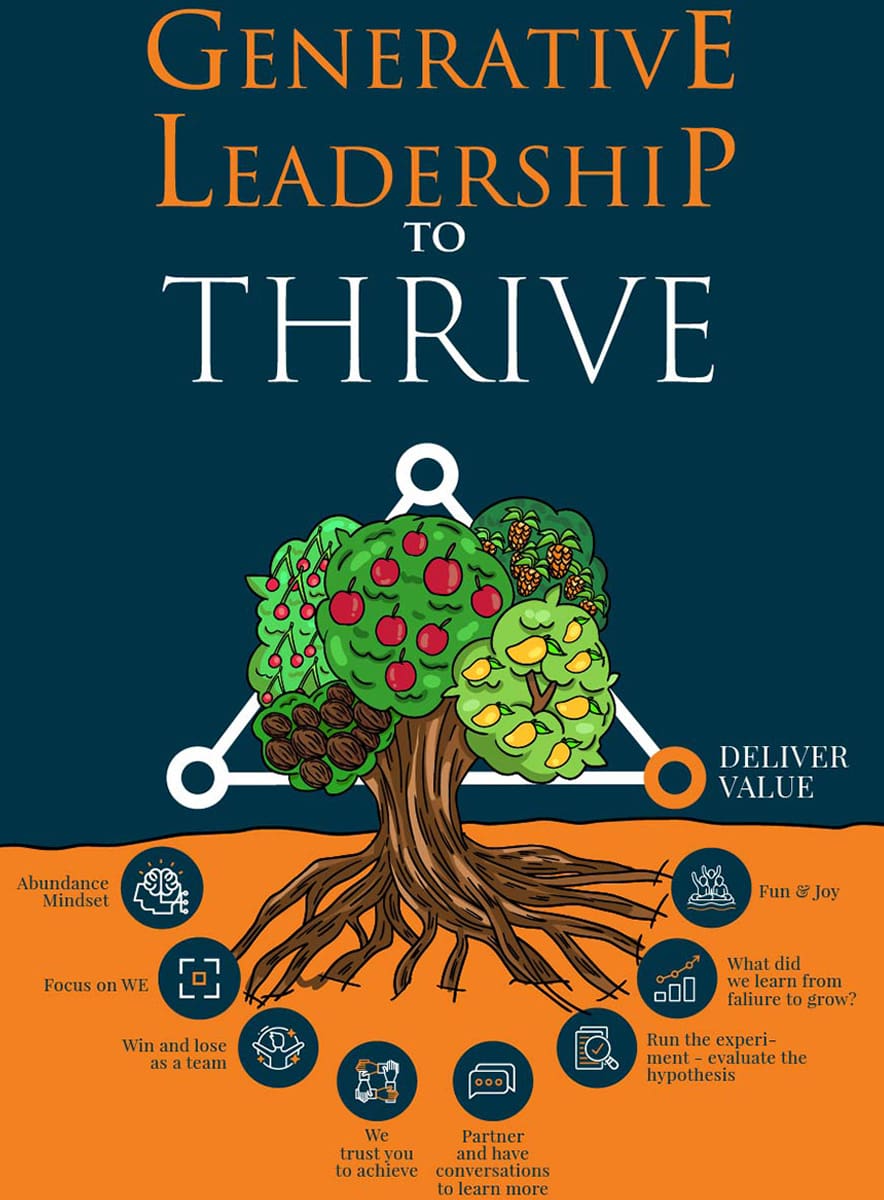
About the Cohort Program:
- Duration: 8 Connections (sessions)
- Format: Engage with a diverse group of peers, progressing through a structured curriculum.
- Features: Interactive workshops, collaborative projects, personalized coaching, and a supportive peer network. Contextual to your need, so bring your challenge!
- Outcome: Develop holistic leadership skills, strategic thinking, and a powerful network of like-minded professionals.
Generative leadership is a style of leadership that focuses on creating and growing people to have a new or changed experience. It is a process of innovation and transformation that can help organizations and individuals thrive. This cohort-style learning experience is a powerful way to impart deep leadership and digital transformation capabilities that can create experiences of scale and intimacy for learners, enabling performance readiness and growth.
Generative leaders can see the potential in people and situations, and they can create a vision for the future that is both inspiring and achievable. They can also build resilient teams and cultures conducive to innovation and growth.
The Generative Leadership to Thrive (GLTT) cohort course is designed for leaders at all levels who want to develop the skills they need to thrive in today's complex and ever-changing world.
The GLTT course is interactive and engaging; participants can practice the skills they learn in real-world situations.
In this course, you will learn the principles of generative leadership, a style of leadership that focuses on creating and growing people to have a new or changed experience. You will also learn to apply these principles to your work and personal life.
By the end of the course, you will be able to:
- Apply the principles of generative leadership to your work and personal lives.
- Lead more effectively and build stronger teams.
- Create a more positive and productive work environment.
- Make a positive impact on the world.
To thrive in today's world, generative leadership is a skill you should develop. It is a powerful leadership practice that can help you achieve your goals and positively impact the world.
If you are a leader who wants to take your skills to the next level, the GLTT course is for you.
What Leaders are Saying ...

Adrian Terry, VP of Transformation and Enterprise Portfolio
You may have an idea of how you hope to evolve as a leader in the future. Have you considered the Generative Leadership lens for your future self? Establish a new brand of leadership that inspires your organization to engage employees at a deeper level and reap the benefits of a fantastic culture! – Adrian Terry, Leadership Executive

Phil Zofrea, Enterprise Agile Coach
Exercising Generative Leadership behaviors will catapult your leadership impact. Leverage Generative Leadership techniques to develop trusting relationships, enrich the human experience, help build a better culture, and watch productivity grow exponentially! – Phil Zofrea, Enterprise Agile Coach
Pricing Adjusted by United Nations IHDI
At KnolShare.org, we're committed to making our leadership development programs accessible and affordable for leaders worldwide. To achieve this, we've introduced a tiered pricing structure based on the United Nations Inequality-adjusted Human Development Index (IHDI).
Pricing Tiers by Country (Based on IHDI):
- Group 1: 100% of list price
- Group 2: 80% of list price
- Group 3: 60% of list price
- Group 4: 50% of list price
The Inequality-Adjusted Human Development Index (IHDI) is calculated by adjusting the Human Development Index (HDI) for inequality in each dimension. The Inequality-Adjusted Human Development Index (IHDI) considers inequality in three dimensions:
- Health - Measured by life expectancy at birth. This dimension acknowledges that longer, healthier lives indicate a better quality of life and greater human development.
- Education - This dimension has two indicators:
- Mean years of schooling for adults aged 25 years and older.
- Expected years of schooling for children entering school.
- Standard of living - Measured by Gross National Income (GNI) per capita. The GNI per capita reflects the average income of a country's citizens.
Register Now
Generative Leadership Introduction with Ed Utley
Who Should Attend?
The course is designed to be interactive and engaging; participants can practice the skills they learn in real-world situations.
Specifically, the course would be a good fit for:
- Leaders at all levels, from frontline supervisors to CEOs.
- People new to leadership or wanting to increase their skills.
- People who want to create a more positive and productive work environment.
- People who want to build stronger teams and achieve their goals more effectively.
- People who want to be more innovative and creative.
- People who want to make a positive impact on the world.
What Is In It For Me (You)?
Cohort attendees receive the following:
- A certificate of completion and digital badge.
- 44 (16 class + 28 self-exploration hrs.) PDUs and Scrum Alliance SDUs.
- Two 30-minute one-on-one Coaching with Dr. Dave
- Generative Leadership To Thrive book
- Comprehensive Learning: Experience a blend of structured learning and expert insights.
- Networking Opportunities: Connect with a global network of professionals.
- Personal and Professional Growth: Tailored to nurture your unique leadership style and capabilities.
Dr. Dave Leadership Journey
Generative Adaptive Practice (GAP)
Anchored in Ubuntu Principles and Values
The Ubuntu philosophy is the cornerstone of building a people-positive culture. Ubuntu is the African philosophy of interconnectedness and shared humanity, ‘I am because we are’ – Archbishop Desmond Tutu. The principle enlightens us to see everyone as fully human, connected by humanity, so we can treat others as having immense worth. By embracing the philosophy of Ubuntu and living it out in daily life, it’s possible for us to overcome division and be stronger together in a world where wise people build bridges and not walls.
Learn to become a generative leader – be confident, show empathy, and effectively lead diverse teams globally and in your community.
'I am because we are' -- Archbishop Desmond Tutu
Ubuntu Principles


Ubuntu Values


Generative Adaptive Practice (GAP) Tenets


The Cohort Connection Schedule
Each connection represents a two-hour virtual gathering to increase your capabilities as a generative leader. The opportunity provides the skills to create an environment for happy contributing people, an experience for satisfied customers, and a thriving business. Based on the cohort working agreement, the connection schedule could be a Two- or four-hour event.
|
Connection |
Agenda | Description |
Topics |
| Connection 1 |
|
Learn how the power of Ubuntu can build a generative culture. |
|
|
Connection 2 |
|
Generative leaders who practice the abundance mindset prioritize collaboration, growth, and creating opportunities for themselves and others. |
|
|
Connection 3 |
|
Generative leaders who focus on "WE" (Willing and Enabled) prioritize the collective success of their team members and empower them to perform at their best. |
|
|
Connection 4 |
|
When a generative leader expresses, "We trust you to achieve our goals," they convey confidence in their team's abilities and create an environment of empowerment and accountability. |
|
|
Connection 5 |
|
When generative leaders show up to partner and engage in conversations to learn more, they prioritize collaboration, active listening, and continuous learning. |
|
|
Connection 6 |
|
When generative leaders are open to running experiments and evaluating hypotheses, they foster a culture of innovation, continuous improvement, and data-driven decision-making. |
|
|
Connection 7 |
|
When generative leaders inquire about what was learned from failure to foster growth, they promote a culture of resilience, learning, and continuous improvement. |
|
|
Connection 8 |
|
Encouraging fun and joy within teams is essential for fostering a positive work environment, boosting morale, and enhancing team dynamics. |
|
Register today!
Register Now
Abundance Mindset Conversation With Adrian Terry
Ask Dr. Dave


We are here to help you achieve your goals.

